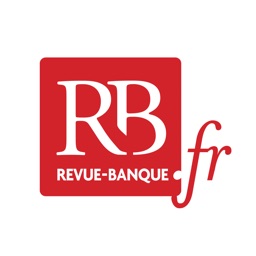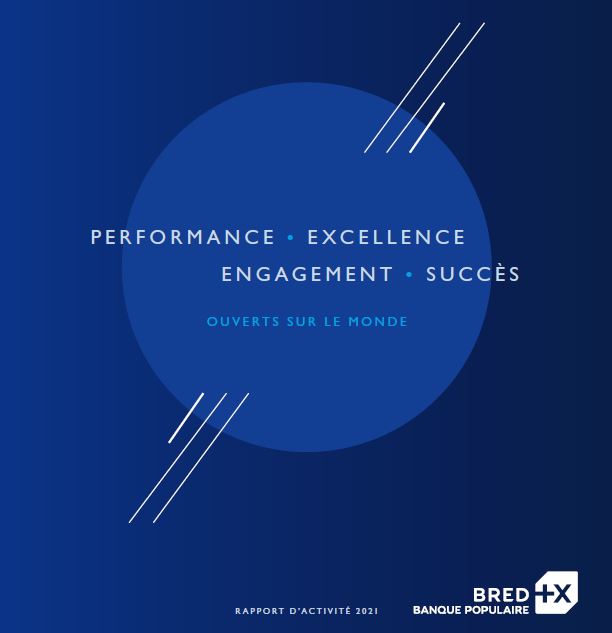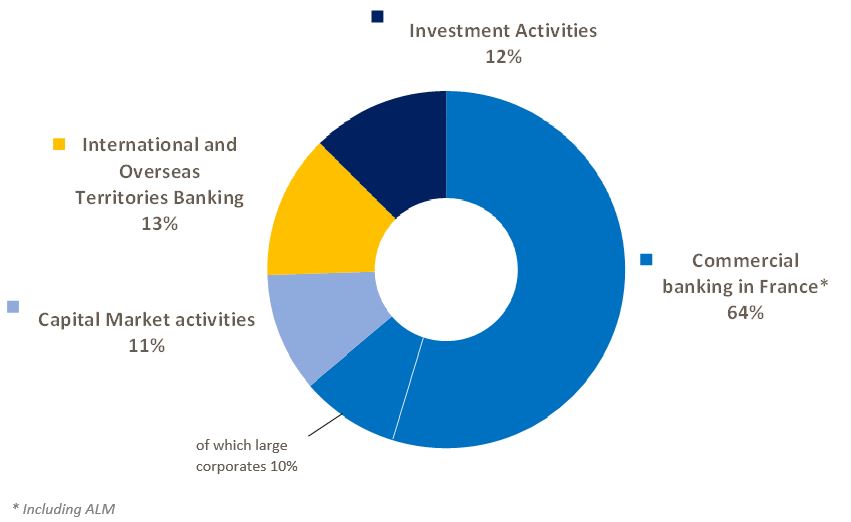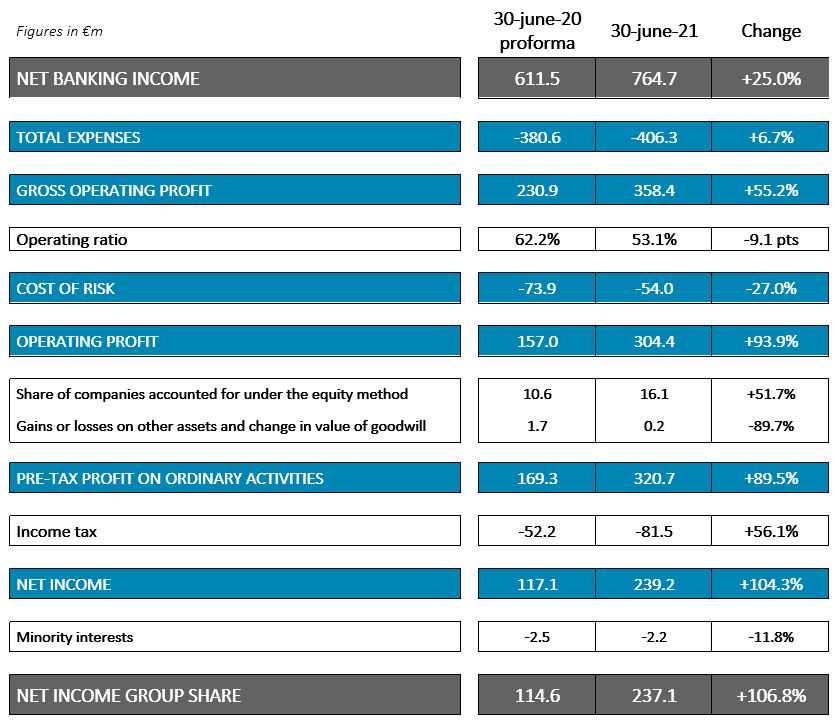The question of the definition and role of the company, which has been debated for several years, has now become very topical, bearing in mind the President of France commissioned a report on this very subject. Should only the shareholders be taken into consideration, or should all those who play a role in the business or who are affected by its activities, in other words its stakeholders, also be included?
The fundamental question is in fact “why redefine the company?”
Why is there a need to change what is already clearly defined in the French Civil Code, which states that a company must first and foremost serve the interests of its shareholders: “Any company must have a lawful object and be created in the common interest of its members.” In other words, the sole interest of the company and its sole objective is to serve its members, who are its shareholders.
I reiterate that the French Civil Code dates back to 1804, which is not entirely irrelevant to what follows.
Does the modern, temporary owner of equity, the shareholder of a listed company, still bear any relation to the member described by the 1804 Civil Code? That is really the fundamental debate to be had, the key point to try to consider.
Macron requested a joint report from Nicole Notat, former secretary general of the CFDT trade union, and Jean-Dominique Sénard, Executive Chairman of Michelin, two individuals who have vastly different experience of corporate life. Very recently published, the report is truly focused on the subject of how to redefine the company.
The report’s authors propose a change to the Civil Code definition as follows: “The company must be managed in its own interests, considering the social and environmental issues around its business activities.” They add that if the definition of ‘company’ is changed as they suggest, those companies that so wish should be offered the chance to also set out a reason for their existence, a purpose or raison d’être.
I am going to try to expand on this subject by adding my view, with a historical approach to the origins of the debate, its development since, and the forces that helped bring about this change.
According to Larry Fink, CEO of the world’s leading investment fund, BlackRock, whose job it is to make profitable investment choices in businesses, it is absolutely necessary to redefine the company to include an incentive to act for the common good. This stance is far removed from the first definition in the French Civil Code. In contrast, some fear that any such change will lead to companies being perpetually bound up in legal procedures.
In actual fact, this debate needs to be put into context to better understand it from a historical perspective and make our own judgement.
Firstly, the term governance appeared in the 1980s and became much more widespread in the 1990s. This “corporate governance” concept covered, and still covers for the most part, the way relationships between a company’s shareholders and its management are organised. This is generally what is meant when talking about corporate governance.
In practice, corporate governance – if we can use this new term to talk about an old subject – has actually evolved in line with the different eras of capitalism, and with its different regulatory practices. To the extent that nowadays we might wonder whether the term “governance” should not encompass the organisation of all relationships between a company’s management and all of its stakeholders, and no longer only with its shareholders.
Throughout the history of capitalism, while various regulatory practices have followed one after the other, they have never entirely eliminated previous practices, so while new forms supersede old forms, the old practices can linger in small ways.
The first of the old styles, still very much alive nonetheless, and practically the only form of governance in the 19th and early 20th centuries, family capitalism was the initial form of business development. These companies were built on the basis of a family-run capitalism where the relationships between shareholders and managers were very straightforward. From the point when you economically exploit an idea by creating a company and developing it, you are both the managing director and the shareholder. Families such as Wendel, Michelin and Renault all started in this fashion at around this time. They often gave their firm the family name. The families were the owners of the businesses and they ran them, basically. Obviously, there were no great discussions about profit allocation, or about who would be the managing director. There were therefore no governance problems.
Next, mainly in the inter-war period, in both the United States and Europe, a form that could be called “managerial capitalism” appeared.
What is managerial capitalism? It is the result of some highly significant historical developments.
The first was businesses being passed on to the following generations. The children, of which there were sometimes many, and then grandchildren. Naturally, and quickly, many heirs no longer held senior management positions in the company. A way therefore had to be found to buy out these heirs, either partly or totally. Secondly, the businesses had grown. To be able to grow more and more, they had to allow outside investors to take equity stakes. Their capital was therefore no longer held solely by family members. This was reflected in the expansion of joint-stock companies. Joint-stock companies were different from companies formed by associate members. This was a fairly radical development, and made it possible to receive capital funds from shareholders who were not executive management. In such cases, a shareholder is far removed from the position of an associate or partner. Naturally, from the point that shareholders ceased to be involved in management of the business, and ownership was no longer passed down through generations of the family, some liquidity of capital invested had to be organised; in other words, some assurance provided that non-executive shareholders were able to divest if they so wished. This stretched still further the connection between permanent executive management and shareholders, who were temporarily stakeholders in the company. It resulted in the development of stock exchanges, an increasingly important factor in regulation. In the United States now, in 80% of corporations, shareholders do not hold more than 10% of the shares.
This shows how far the disconnect between executives and shareholders has grown.
Very often, as a consequence of historical development and because share ownership was scattered, no single shareholder had any influence on senior management. It was difficult for shareholders to exert any real, effective control over executives. In a way, then, shareholders’ freedom to sell their shares was exchanged de facto for loss of management control.
As a result, shareholders seeking liquidity probably had neither the wish nor the time to control the managing director. In this way, in the period before and after WW2, senior executives gradually freed themselves from their shareholders, and set up a sort of internal managerial control. Shareholders had the formal right to appoint members of the Board of Directors and the Supervisory Board, and these boards had the formal right to appoint senior executives. But often, however, and even now it still happens, senior managers themselves co-opted the members of the Supervisory Board or Board of Directors, and although independent members might well have also sat on boards, many independent directors in larger companies were the nearest and dearest of senior management. Rules might well have been laid down, but the fact nevertheless remains that independent directors are still co-opted.
Companies gradually grew into conglomerates and the managing director figure became vital, and rightly so, in the three decades after WW2.
What is the basis for these senior executives’ authority? It is based on their skills and expertise, and here is where technocracy emerged. Their authority arises from their technical capability and managerial competence. These executives, in a sense emancipated from their shareholders, sought growth and a long-term future for their company, which is entirely laudable, and often also increased their power by virtue of the size of their group.
In this arrangement, the shareholders’ role is somewhat reduced and the efficiency of the company, from the shareholders’ point of view in any event, was not senior management’s priority. The priority was not necessarily the constant search for the best value or the greatest efficiency. The objective was therefore not increased value for shareholders.
As a result, in fact, yields were not especially advantageous for shareholders over this period. Indeed, up to the mid-1970s, yields were often distinctly unattractive.
Then, consequently, because every system produces excesses, we moved on to a version of capitalism we might call shareholder capitalism.
We did not revert to family capitalism, but managerial capitalism was left behind, mainly in the 1980s and 1990s, and shareholder capitalism began.
So, what actually happened? In the late 70s, and particularly in the 80s, three phenomena were seen.
The first phenomenon that could be seen around this time was the relative decline in the economic power of the United States. In the late 70s and early 80s, the USA was wondering about its economic decline. The common view that began to circulate at that time was that American conglomerates, formed and developed up to the mid-70s, were not very efficient nor very competitive, and that their at-all-costs diversification did not deliver great profitability, and in fact contributed to the relative economic decline of the United States.
The second factor at this time was the globalisation of financial markets, deregulation and the opening-up of financial markets and banking. This naturally meant the return of shareholders and creditors. Financial globalisation actually returned some power to them. During the previous years, the 1970s, negative real interest rates had been seen. Inflation was often higher than nominal interest rates. Debtors were at a distinct advantage, and companies’ first thought was always to borrow.
From the late 1970s and early 1980s, monetary policies fought inflation and economies shifted to much higher interest rates resulting in real interest rates, i.e. rates after inflation, being positive. Power then moved from debtors to creditors, and also to shareholders, who with globalisation, were able to chose the best locations to invest in shares from the entire world. They accordingly become more demanding in terms of yield expectations, and therefore exerted more pressure on executives.
The stock market was to become increasingly important from the 1980s, and shareholders regained power. How? As they had many more investment choices, they exercised their freedom to sell whenever they felt returns were inadequate. If shareholders sell shares in one company on a massive scale, it becomes weaker and a take-over target, and senior management is at risk of being replaced. Executives then feel under threat. And in the second half of the 80s, traders would buy groups, then carve them up by selling them piecemeal, with potentially considerable capital gains.
This gave rise to a third phenomenon: a stronger corporate role for shareholders. This power, derived from their capacity to sell the company’s shares, or buy them during hostile takeovers, etc., thereby unsettling senior management, led spontaneously to something of a strengthening of their corporate role.
The result of this has been a recalling to order of executives by those on whose behalf they act; and hence the appearance of “governance”. That is, shareholders taking charge of their role as principals and requiring managers, as their agents, to prioritise the maximisation of shareholder wealth in their objectives. In companies, this has brought about the creation of audit committees, remuneration or selection committees, strategy committees and risk committees.
Nowadays, in banks for example, and a good thing too, regulators check that governance is of a good standard and that members of the Board of Directors or Supervisory Board receive the right information, that audit or risk committees investigate issues thoroughly, and so on.
Similarly, executive remuneration now included incentive schemes to align their interests with those of their shareholders. The proportion of bonus payments rocketed, and stock options became very commonplace in the 1990s. This made sense in the light of the excesses of managerial capitalism.
Naturally, sanctions then developed. If value creation was inadequate, the managing director was fired, which really did not happen much in previous decades. Sometimes it became a mania, and whenever profits were deemed inadequate, senior managers were dismissed. Profitability norms emerged in the 1990s and then in the 2000s, as ROE – return on equity – norms were established at 15% minimum, regardless of the sector, competitive environment or any other factor. The theory of value creation also burst forth, totally paradoxical in my opinion, but very much followed. To what end? To develop efficiency, competitiveness and profitability and to give more significant returns to shareholders, something they had singularly not had, it must be agreed, during the previous 30 years.
What are the positive effects of shareholder capitalism? A number of virtuous circles were started.
The first, by way of example and symbolically, was Silicon Valley. The reason was because it was extremely favourable towards innovation in the 80s and 90s and indeed still is now. Technological innovation in particular was triggered by an explosion in highly innovative small companies, start-ups of all kinds.
They were able to flourish so quickly, so healthily and expand so strongly because they were able to attract talent by means of stock options. It thus became possible to reward the risk such talent was taking, as they could have earned much higher salaries if they had joined established major corporations. They were taking much more risk, received a lower salary, but could become wealthy if the firm was successful, which is usually very difficult as an employee. So it enabled a financial environment favourable to technological innovation to be created. This was the first virtuous circle.
The second virtuous circle was based on the fact this fostered the development of venture capital, or private equity, since stock market listing was an obvious outcome for these start-ups.
Venture capital expanded very swiftly, and provided a great deal of capital to start-ups because it was attracted by the extraordinary potential for capital gains if they met with success.
These innovative companies found the capital to grow and succeed often enough for it to be statistically significant.
It should be borne in mind that, for these two reasons alone, productivity gains in the USA from 1994 to 2005 were twice as high as those seen in Europe. So, there was a real phenomenon of innovation, producing productivity gains and brought about by everything we have just mentioned.
Added to this is American universities’ closeness to industry and the development of applied research in their research centres, which are effectively focused on the needs of businesses.
The third virtuous circle, and very well it worked too in the 1990s, was employee share ownership, very widespread in the United States in particular. In this way, when value increases strongly, also linked to the regular lowering of interest rates over this period, employees’ income climbed beyond their salaries. The effect was greater purchasing power, more growth and more development for businesses, and therefore greater value.
And thus the virtuous circle was complete.
However, this shareholder capitalism became dangerous. Despite all these successes, in reality, it quickly led to astounding excesses, that explain why we are considering leaving shareholder capitalism behind and perhaps creating a version of capitalism that I will call partnership capitalism.
These excesses have been seen since 1997. They arose from the belief that economic cycles had ceased to operate, since virtuous circles had begun to spin, and that from the point when enterprise values rose perpetually, incomes then increased (albeit not through wages and salaries), which in turn then brought about greater demand, and therefore greater growth, etc.
So it was we believed in the 90s that economic cycles had stopped and crises were a thing of the past. However, every time we think that, we are seriously affected by subsequent events. Consequently, from 1997, and maybe a little before, complete speculation replaced betting on reasonable odds. As soon as you start to think that economic cycles are no more, that tomorrow will always be better than today and that consequently growth is endless, it obviously becomes appealing to gamble constantly, taking on more debt, buying more shares, more property, etc. and, for companies, ever-increasing capital expenditure.
In reality, it caused speculative bubbles, on the stock market especially, and tech stocks in particular, ending in the monumental stock market crash of 2000. In France, for example, the CAC40 stood at 7,000 in June 2000, and 2,300 by March 2003. The collapse was spectacular, and the crash inevitably had repercussions on the real economy. It therefore led to the recession. First point and first excess, bubbles, especially stock market bubbles, appeared very clearly, at that point.
From 2003, people again started to believe it was easy to eliminate boom and bust. Another series of long, thrilling years started. Years during which, in actual fact, collective euphoria again took grip, with a propensity for rose-tinted glasses to trump any wisdom. Consequently, from 2000 to 2007, we saw a rise in debt in private economic agents that was beyond all comprehension. A few illustrations. In the United States in 2000, household debt was equal to 100% of income. In 2007, it was 140%. In the UK, it was 100% in 2000, and 170% of income in 2007. Same story in Spain. In contrast, in Germany it was 70% in 2000 and stayed at 70% by 2007. Germany showed absolutely remarkable stability, while the rest of the world saw its debt skyrocket. France rose from 60% to 80%, which was less spectacular but still substantial.
All private economic agents, not only consumers but also businesses, experienced a worrying rise in debt leading to a credit bubble and a property bubble, as many people went into debt to buy property either for its yield or purely speculatively. It ended in a major financial and economic crisis, the second since the 1930s, from 2007 to 2009.
To this chapter of excesses and failures, we can add that, in order to respect (regardless of temperature, tides and prevailing winds) the norm of 15% minimum return on equity, many companies (not only in the USA but especially in the USA) had to buy back their own shares and got into debt to do so, which obviously weakened them and led more or less everywhere to an accumulation of fragile and risky financial positions. Lastly, a race for size was again triggered, for the alleged synergies, while the most serious studies conducted subsequently showed that half of all mergers created no value. But that is how euphoria can take hold. Anything seems possible during a euphoric phase.
During this period, senior management incomes rose significantly. In the US in 1965 – and these figures are interesting – the average income of a CEO was 44 times that of the workers. In the 2000s, the average income of a CEO, including the gains on stock options, was 400 times the lowest wages. Which has obviously resulted in a feeling of inequality, much more keenly felt in the United States than in France, as these figures hold more true for the US and UK than France. However, this has led to certain now well-known effects, in these countries particularly.
One of the latest effects of all this has been creative accounting and fraud. Examples were seen in 2001-2003, with Enron, Worldcom and Parmalat, to mention only the most famous, but there were others, including sometimes in France, resulting in 2003 in a total bond market freeze. No-one was willing to lend on bond markets any more, and fortunately banks were on hand to finance large companies, because it was impossible to issue bonds. As a consequence of this fraud, it should be recalled, there was complete illiquidity on the bond market in 2003.
All of which often led to a sort of short-termism on the part of executives, because the quarter results presentations were held strongly influenced their behaviour. We know full well that too much short-termism in business dealings can be hazardous to future well-being; hazardous for the companies themselves and hazardous for society in general. It was also criticised by many American economists.
The question then arises, if shareholder capitalism led to so much excess, of determining which reforms should be applied for the common good and whether, ultimately, it is truly right and proper that the only principal on whose behalf the executive acts is the shareholder. Do we now need partnership capitalism?
The reply to this question in the economic and financial literature is that it is normal that it is only the shareholders, because shareholders take the risk. There is in fact no assurance of a fixed return in consideration for the contribution of their capital. There is no contractual certainty that their money will be returned, or any set yield defined in advance. For lenders or banks, it is slightly different. They obviously take a credit risk, but if the company does not go bankrupt, then they usually come before shareholders and importantly, unless the borrower defaults, they get a return fixed in advance even if the financial situation of the borrowing company changes, for better or for worse.
It is therefore reasonable for shareholders to exert some control over management. It is the least one would expect. However, it must be seen, and perhaps agreed with, that increasingly, the other stakeholders in a company also take risks. The theory that only shareholders take risks is not in itself sufficient, especially since the 80s and 90s. The reason is that executives under more pressure to satisfy shareholders have regularly increased dividend rates, including when profits fall; indeed precisely to offset the effect of falling profits.
Here are a few specific figures from the United States.
Between 1980 and 1990, business profits climbed slightly, but the proportion of profits taken in dividends doubled. This means that in those ten years, dividend distribution as a share of net profit rose from 24.7% to 50.1%. From 1990 to 1997, profits increased a great deal and the dividend percentage held steady. From 1998 to 2003, profits dropped and the absolute value of dividends rose. As a result, in 2003, 83% of net profits in the United States were distributed as dividends. Here we see a form of shareholder protection; shareholders naturally try to smooth out risk as much as possible. However, while shareholder risk is down, it is because other risks have increased at the same time. In particular, risk for employees, who are experiencing more risk in the variable part of their pay, or indeed with their job itself. This is not unhealthy and sometimes proves more efficient. But then it must be considered they are also a stakeholder in the business, to be taken into greater account. Mention can also be made of supplier risk, with suppliers under increasing pressure, and customer risk, customers sometimes being the instigators of a change in product quality, lower safety, or even accelerated obsolescence, as the press mentioned again recently.
It seems to me that it is reasonable to take seriously the risks to which other stakeholders are exposed. How can this be done? For employees, the idea, already accepted in France and many other countries, is that they are represented on the Board of Directors, as board members, because they are stakeholders in the business. Not in the majority, but to strike a balance, so their voice is heard.
For suppliers, it could be through the law.
For the environment, there is legislation, but also corporate image.
For customers, it is the strength of social networks and public image. Nowadays, if a customer threatens to mention customer service shortcomings on social media, things quickly get moving. A further aspect in regulation is the law, such as the class actions seen in the United States. But it is no bed of roses, and I hope there will not be too many class actions in France, although the fact remains that businesses do respond.
There are also – and forgive me this particular viewpoint – cooperatives and mutual societies, bearing in mind it is only one possible form, and not the only one. One possible form among many others. Allow me, therefore, for a brief moment, to plead my own cause for cooperative and mutual banks: without sacrificing any of their efficiency, they already match some of these characteristics in their retail banking business. In actual fact, their owners are their member-customers, who elect the board members, who are also members of the cooperative. In other words, almost all of the members of the board (apart from staff representatives) are themselves member-customers. This inevitably influences strategy and how business is conducted. I don’t think this would be easy to do everywhere, but in a retail bank, for example, it is realistic and useful.
Cooperative banking is also a decentralised model that strengthens relationships not only with its customers, but also with the communities where the bank operates. We are more in symbiosis, because we collect savings and lend money in the same area, and we obviously pay close attention to the regional economy.
The place accorded to employees should also be mentioned, because for some time, at Caisses d’Epargne bank for example, staff representatives have been members of the Supervisory Board.
This delivers expanded governance, which is a very modern approach, in a way.
o conclude, a discussion on this subject is fundamental, and it is worth redefining a ‘company’ to broaden its role, and to rightly and properly take all stakeholders into greater account. Without, however, taking the risk of any paralysing “legalism”, because the result of poorly defining ‘company’ could be endless legal proceedings, which would be unbearable.
I find the phrase “managed in its own interests” in Senard and Notat’s report interesting. It means that the purpose, the long-term purpose, of a company has been perceived. To add “…considering the social and environmental issues around its business activities” seems reasonable to me, in the first analysis.
Likewise the idea of suggesting the companies wishing to do so can set down a more specific “raison d’être” or corporate purpose. This new definition must be appropriate to each form of enterprise, since the raison d’être of a regional bank cannot be the same as that of a steel company or an IT company, etc. Any company, listed or otherwise, private or cooperative, large or small, if it so wishes, if its Board so wishes, could thus define its own purpose and reinvent the challenge of organisational governance.
It seems to me, if I might make so bold, that this is part of the price to pay to continue to have open companies in future, and impede the rise of populism.







